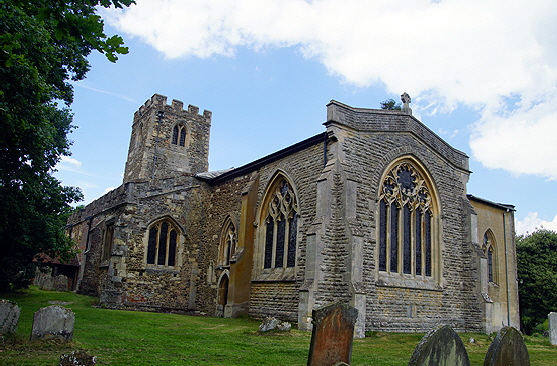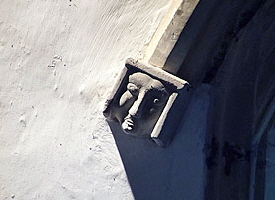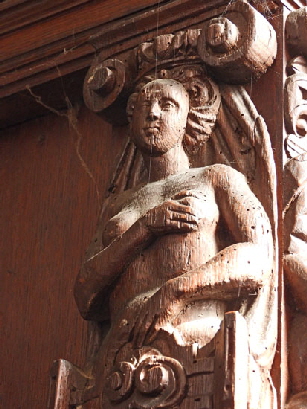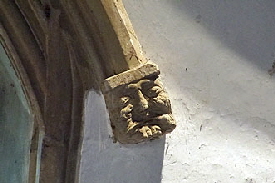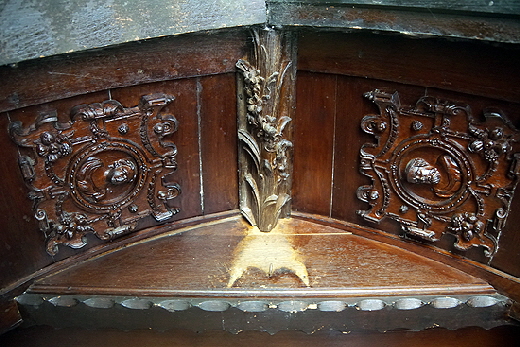|
Alphabetical List |
|
|
|
|
|
|
|
County List and Topics |
|
|
|
Please sign my Guestbook and leave feedback |
|
|
||||||||||||||||||||||||||
|
For, as Pevsner put it: “There is nothing in this exterior to prepare for the shock in store upon entering” . That “shock” is caused by “The mass of woodwork indiscriminately got together by Robert Henley, Lord Ongley in 1841 etc. It oppresses you from all sides; it is utterly disjointed...” . I think we might take it that the Blessed Nikolaus was not a fan then! Simon Jenkins was moved to write “the resulting atmosphere is that of an alpine chalet built into an Edwardian public school”. I am sure that Simon knows a lot more about public schools and alpine chalets than I do so I suppose he knows what the hell he’s talking about. I would stick with gloomy and compellingly bizarre. The first thing you notice as you go in is that the odd arrangement of the benches in the nave. The southern range faces across the church while the northern benches faces east in the traditional way. That is, if you are not first distracted by the extraordinary carvings of two snakes undulating along the front of the south range. Both the southern and northern benches have carved serrations on their backs so that when you look at them face-on at ground level they look like layers of wooden postage stamps. Above the southern benches is a south gallery - a very unusual feature - and benches that have a really lousy view. Think of the cheapest seats in an opera house. At least they don’t have a spotlight in front of you which is what happened to me once at Covent Garden (although Placido Domingo was singing so I didn’t really need to see). The gallery fills most of the south aisle. There is a Lady Chapel at the end of the aisle but it is totally hemmed in. To the east of the south seating range is a large square box pew that belonged to the Shuttleworth family. The Church Guide tells us it is typical late seventeenth century Belgian. Beyond that is more lateral seating, backed by wooden wall panels with clearly royal insignia and the frequent repetition of the letters “AC”. These are believed to have come from the private chapel of the unfortunate Anne of Cleves, Cleves being part of modern Belgium. Around the church are various hubristic monuments and beyond the east end is the Ongley mausoleum. This is an extraordinary church that many will love and a few will hate. Whatever else, it is itself a monument to the extent to which the great and the good could re-create the the interiors of churches, commemorating themselves and their families through cheesy monuments and stained glass, as well as indulging themselves in their - in this case dubious - taste in furnishing. |
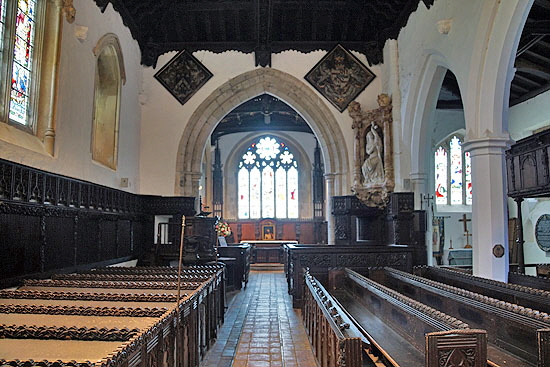 |
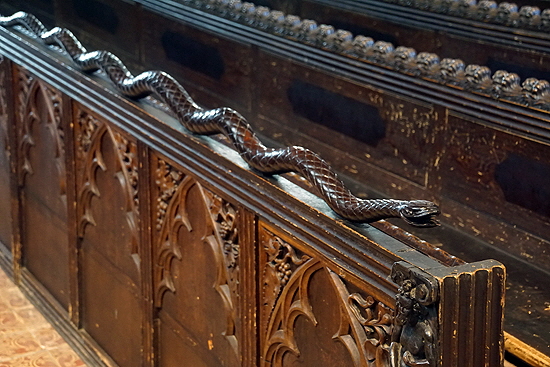 |
|
Left: Looking towards the east end and actually it is much darker than this Photo-shopped picture. It is as if those wooden furnishing suck out all the light. Note the vainglorious monument in a highly unorthodox position to the right of the chancel arch. Right: The serrated backs of the benches are a common theme here but snakes - there are two in fact - are extraordinary. This snake undulates his was towards the west end. Another slithers to the east. Look, I know that snakes have bodies unlike others in the animal kingdom and I am aware of the contortionist capabilities of the sidewinder but the acrobatics of these snakes are quite something! To the right is the rather claustrophobic Lady Chapel. |
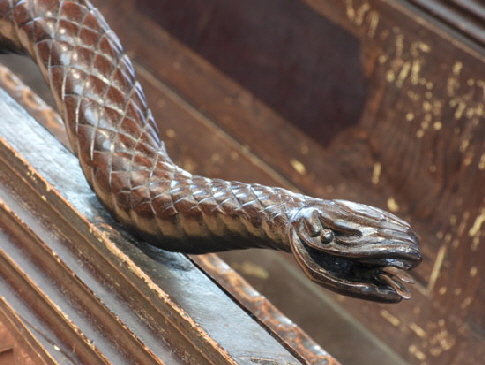 |
 |
|
The detail of the snake is quite remarkable. Imagine the skill required to carve this from a single length of wood and to carve in all of those scales with such geometrical regularity. Pictures courtesy of Bonnie Killingback. |
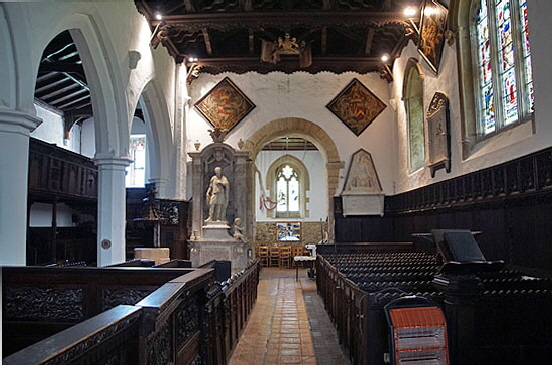 |
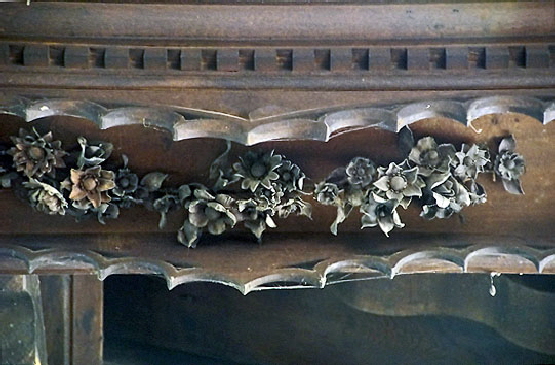 |
|
Left: Looking to the west through the Norman tower arch. Again, monuments and hatchments are conspicuous. This may be a parish church, but we have to conclude that in the past this has been in name only. Right: Before we get immersed in the sea of Flemish woodwork here it is worth mentioning the remarkable and rather beautiful decorations on the roof beams. These are actually made of leather which is unique in my experience. |
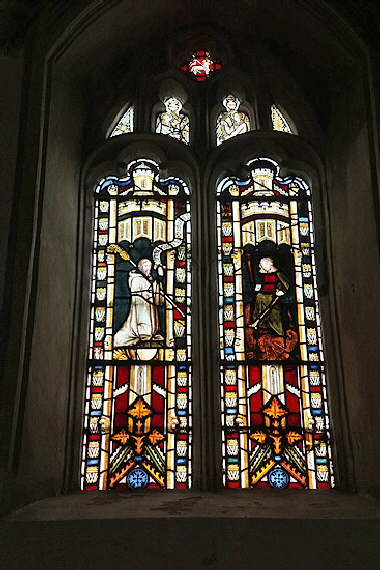 |
 |
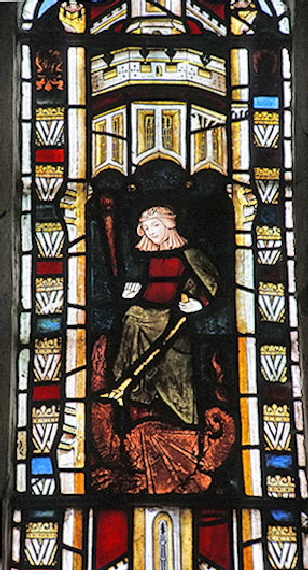 |
||||||||||||||||||||||||
|
The church’s only surviving mediaeval treasure is this stained glass in the north side of the nave. It comes from the dissolved Old Wordon Abbey. If you look carefully you can see that the windows did not make the journey totally intact. Left: Shows the whole window. On the left is the unique representation of a Cistercian abbot of the old priory. To the right is St Margaret holding a dragon by a rope. Centre: The Abbott. He is wearing his white habit and carries a pastoral staff. He is said to be Abbot Walter Clifton who held office from 1346-97. That is evidenced by the “W” monogram throughout the borders of the window and the name Walter appears in the inscription above his supplicant hands. The glass itself is said to date from 1381-2. Right: St Margaret of Antioch with her Dragon. Margaret, said to be beautiful, was thrown into jail by the Roman official, Olibrius, because he demanded she refused to renounce her Christianity and marry him. She was visited by the Devil in the guise of a dragon. She fought him but surprisingly the dragon still managed to eat her whole. Equally surprisingly, this trauma did not kill her so, by waving the cross that she just happened to be carrying, it miraculously having not been confiscated by her oppressors, she caused Monsieur le Dragon’s belly to split asunder and she walked free. Quite how she got out of her jail and escaped the lecherous Olibrius, the hagiographers did not record. An eternity of sainthood was her reward, of course. St Margaret is a favourite character in English church iconography. There were few things more approved of than a woman’s resisting fornication. Especially with a nasty pagan. Note that the “W” monogram surrounds her half of the window as well. |
||||||||||||||||||||||||||
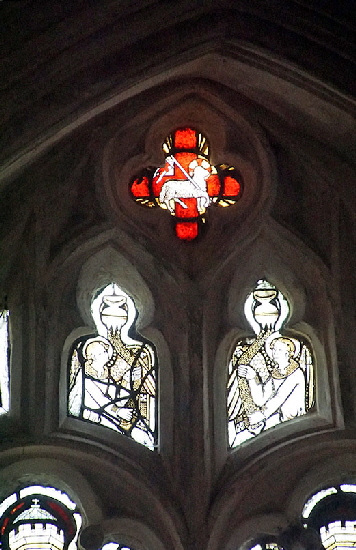 |
||||||||||||||||||||||||||
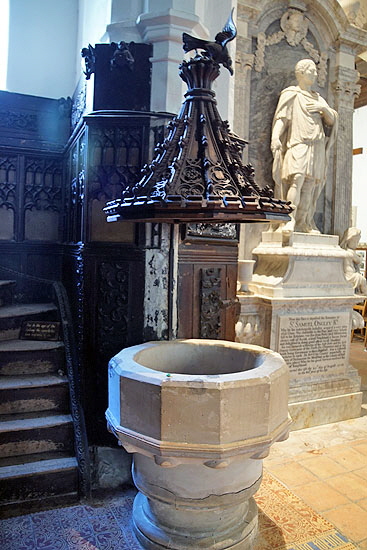 |
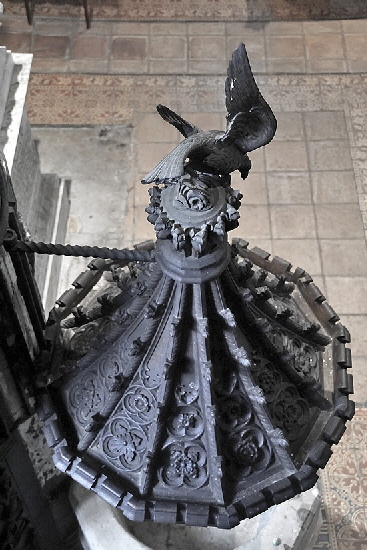 |
|||||||||||||||||||||||||
|
Left: The top lights of the mediaeval window shows two censing angels and an agnus dei. Centre: The font is a plain fourteenth century affair. Above is the neo-Gothic cover. Right: The south gallery steps provide an ideal vantage point to see the font cover with its traditional Pelican in her Piety decoration. |
||||||||||||||||||||||||||
 |
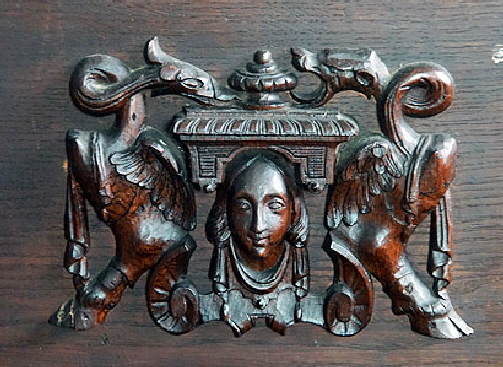 |
|||||||||||||||||||||||||
|
Left: The area south east of the chancel arch has more areas of seating with the serrated tops still much in evidence. In the background is a large area of panelling beleived to have come from Ann of Cleves’s private chapel. Right: This image recurs in the church and whatever the merits of the Ann of Cleves theory we must begin by saying that we are surely looking at things retrieved from a noblewoman’s chapel. There are no counterpart male images. |
||||||||||||||||||||||||||
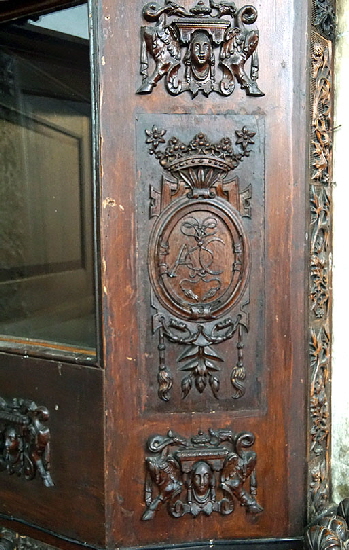 |
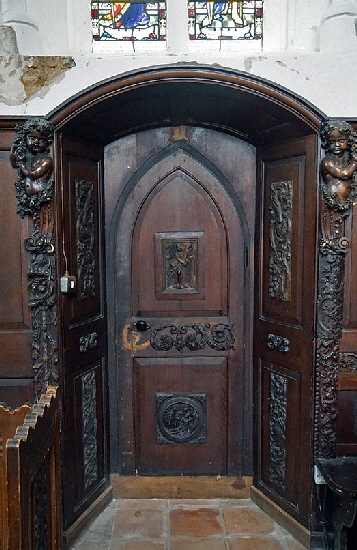 |
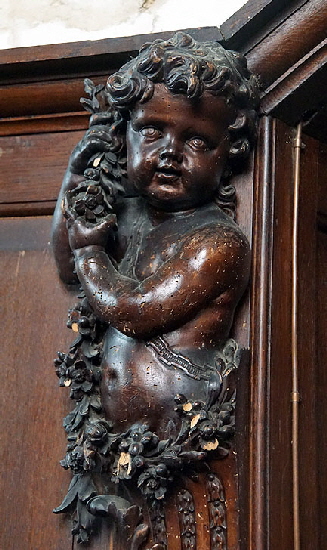 |
||||||||||||||||||||||||
|
Left: The “AC” monogram is to be seen in several places. The cartouche is surmounted by a device that incorporates a crown so the Ann of Cleves provenance seems very likely, doesn’t it? Centre: The south door is also believed to be from the Ann of Cleves chapel. although the door surround surely is not. Right: Flanking cherub of the south door. |
||||||||||||||||||||||||||
 |
||||||||||||||||||||||||||
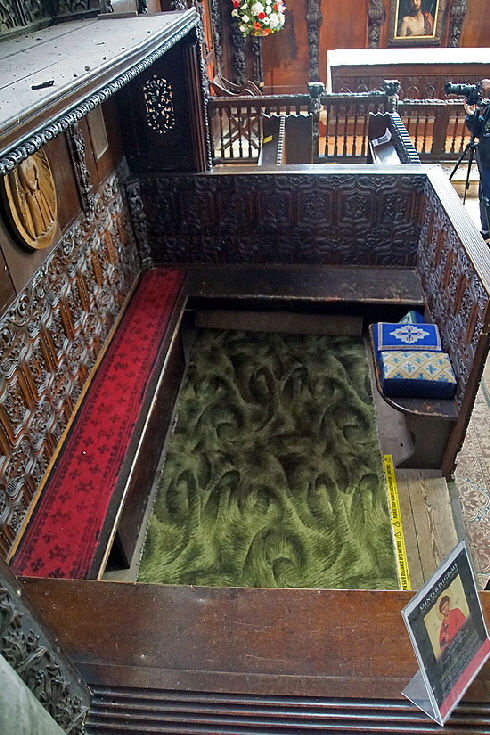 |
||||||||||||||||||||||||||
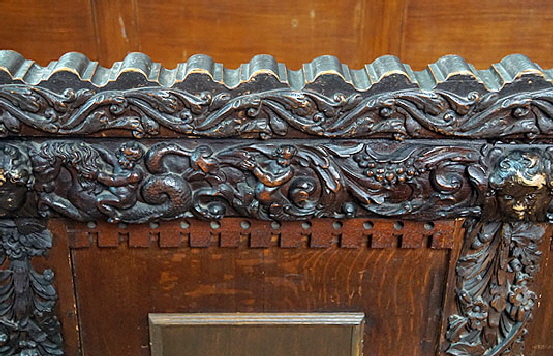 |
||||||||||||||||||||||||||
|
Left Upper: A pew with elaborate decoration some of which is shown in detail (left below). Right: One the north side of the chancel is the so-called “Vicarage Pew”. Carpets by “CarpetRight”. 1990 vintage. |
||||||||||||||||||||||||||
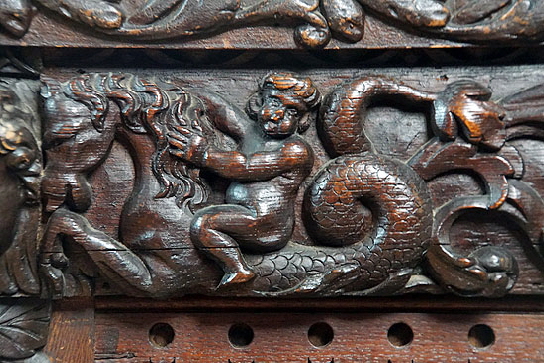 |
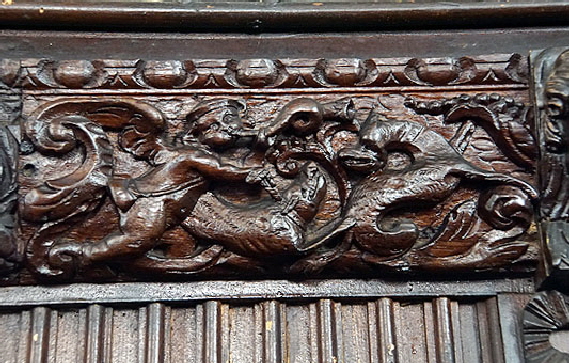 |
|||||||||||||||||||||||||
|
Pew decorations. Left: a boy (?) rides a sea horse - half fish, half horse, worthy of that name. Right: An angelic figure blows his trumpet, presumably to discomfit of the beasts around him. |
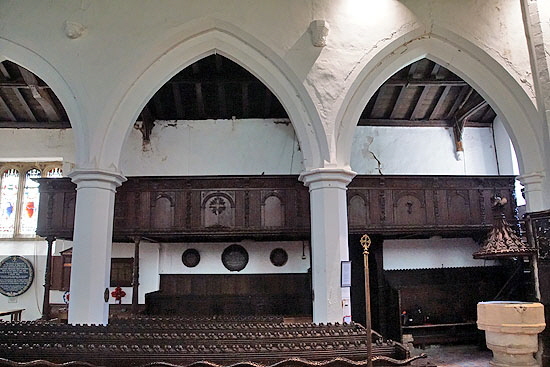 |
||||||||||||||
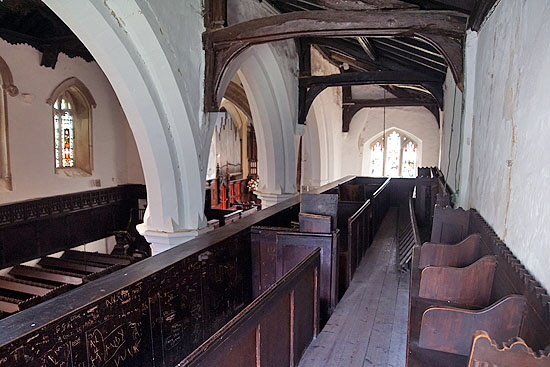 |
||||||||||||||
|
Left: The unusual south gallery, the font and cover to its right. Right: The gallery is an odd affair. There is no sight of the altar, although some of the occupants, at least would be able to see the pulpit. It is surprising that the church needed this extra accommodation. It has, as you can see, been subjected to moronic graffiti. |
||||||||||||||
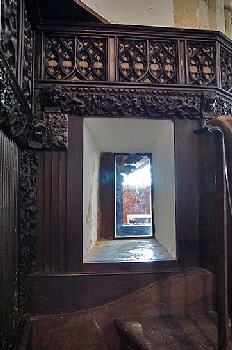 |
||||||||||||||
 |
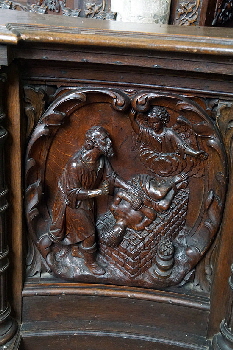 |
|||||||||||||
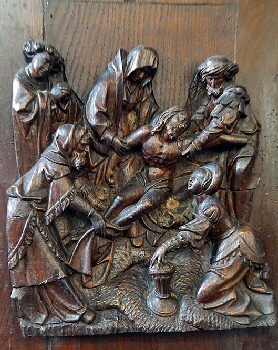 |
||||||||||||||
|
Left: The pulpit is also believed to be of seventeenth century Flemish provenance. Second Left: Part of the Ann of Cleves panelling. Second Right: A carving of that most charming of Old Testament stories Abraham being stopped from sacrificing his son Isaac after God’s “show me how much you love me moment”. Far Right: The functionality of squints is always a matter for debate but there seems little doubt that this one was intended to give the occupants of the pew a view of the altar, |
||||||||||||||
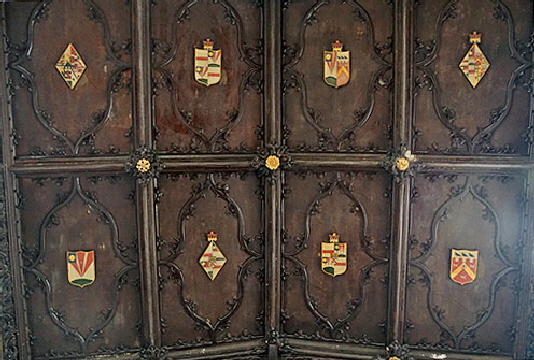 |
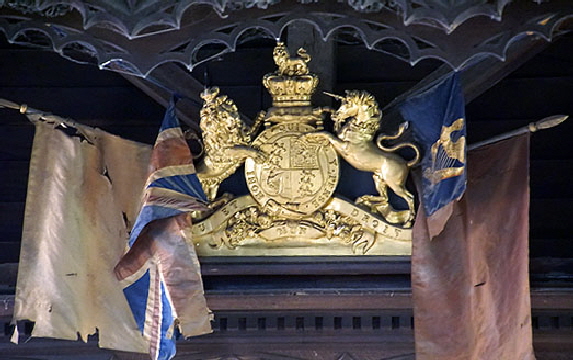 |
|||||||||||||
|
Left: Ceiling with coats of arms of the patron families. Right: The royal arms here are as OTT as the rest of the church - in this case located high above the tower arch. The provenance of the flags is unknown, although the Church Guide believes one of them to be of the Loyal Warden Troop of the Volunteer Troop raised in 1803 under the threat of invasion by Napoleon. Sadly, old Boney never did make the Royal Navy’s day”! |
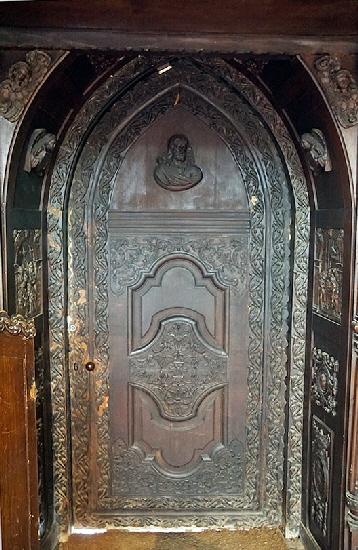 |
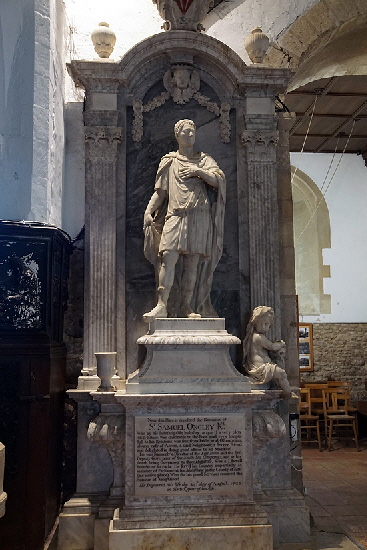 |
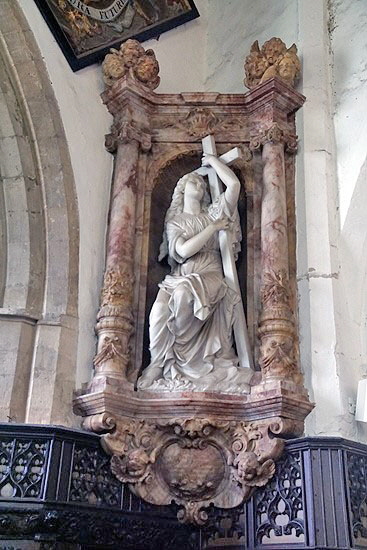 |
|
Left: The south door from the outside. Centre: The in-no-way-hubristic life sized monument of Sir Samuel Ongley MP (d.1726) dressed fetchingly as a Roman emperor or similar. His hagiographic inscription is too long to repeat here but as Direct for of the East India Company he would have been stinking rich and as Deputy Governor of the South Sea Company (of “Bubble” infamy) he would have been at best delusional. “By his indefatigable industry (he) acquired a plentiful estate”. I bet. Pevsner, it must be said, seemed to really like it. Myself, bad taste always overcomes my admiration of its execution! Right: Well by the time this one was erected oi its unusual (and again, rather hubristic) position to the right of the chancel arch, the classical schtick had passed. This is the monument to Robert Henley, Lord Ongley (d1814). Grand, for sure, but not, perhaps, quite so OTT! |
|
|
||||||||||||||||||||||||||||||||||||
|
Centre: This photograph (courtesy of Bonnie Killingback) shows a classical but naturalistic maiden underneath an ionic capital, sadly afflicted by woodworm. Either that or she was placed next to a dartboard. It rather proves Pevsner’s point, however, about the contents of this church being “thoroughly disjointed! Right: Carvings on the underside of the south door. |
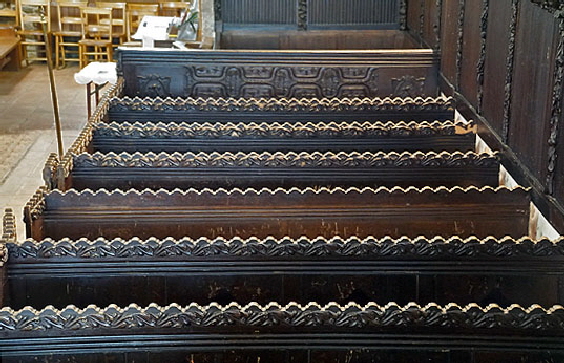 |
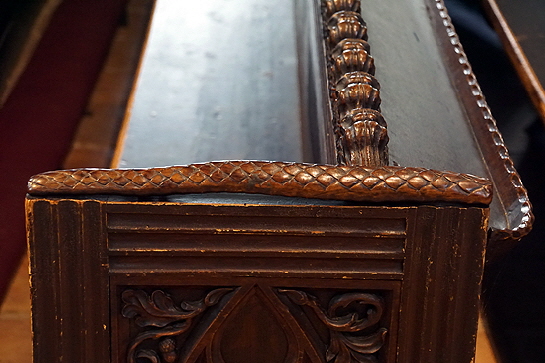 |
||||||||||||||||||||||
|
Left: Pews on the north side of the nave. Right: The snake theme is rather bizarrely maintained on the south side of the nave with this length of headless snake atop the bench end. A sloughed snake skin perhaps? Not the least of the peculiarities of this church are that the benches on the north and south sides of the nave are at right angles to each other! A case of shoehorning them all in total disregard of practicalities? |
|||||||||||||||||||||||
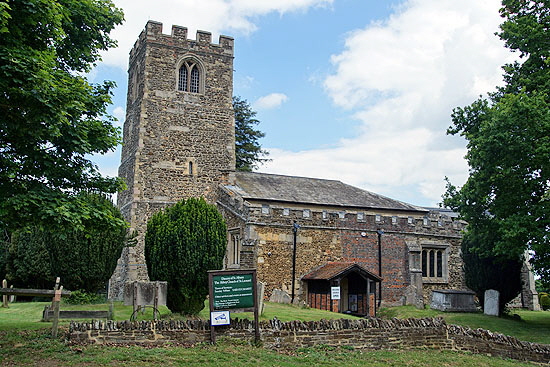 |
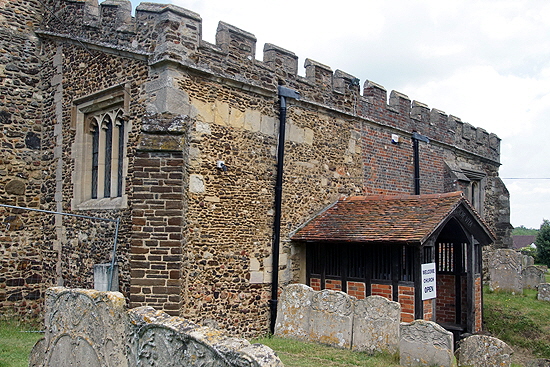 |
||||||||||||||||||||||
|
Left: The church from the south. Right: The south aisle and porch show an architectural incoherence matched only by the chaotic scenes within! |
|||||||||||||||||||||||
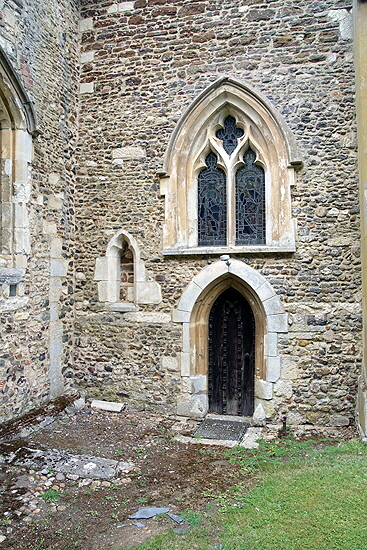 |
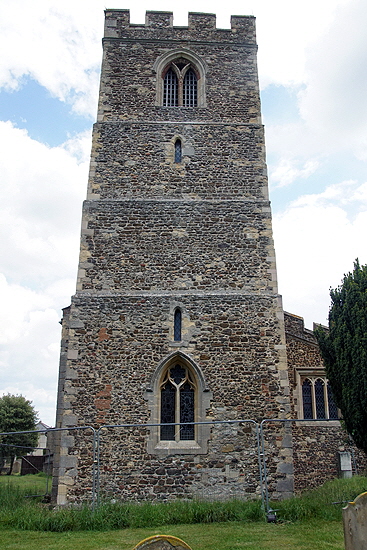 |
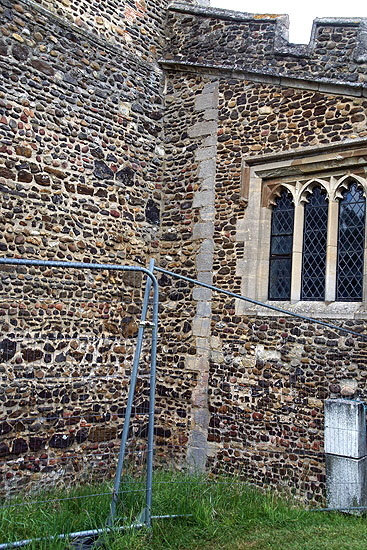 |
|||||||||||||||||||||
|
Left: The west end of the north wall of the chancel presents a typically muddled look. I surmise that the north door is mediaeval - possibly Early English - but the over-large window above it is Victorian. The little window to the left also looks mediaeval but with this church - who knows? Centre: The west tower with its four stages is perhaps the most coherent part of the church. The tower arch proves the base to be Norman. Right: We can see here that the nave was originally wider than the Norman tower and to it was attached the south aisle. |
|||||||||||||||||||||||
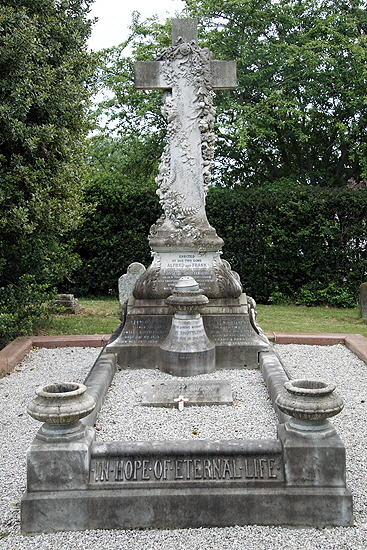 |
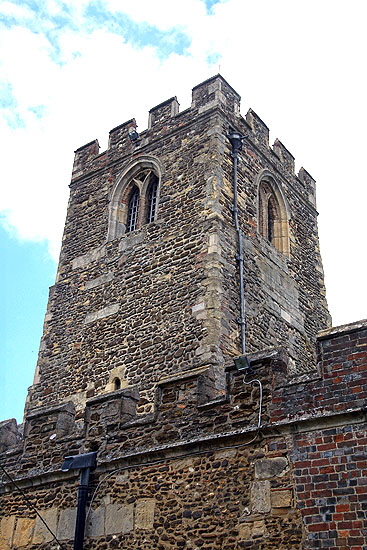 |
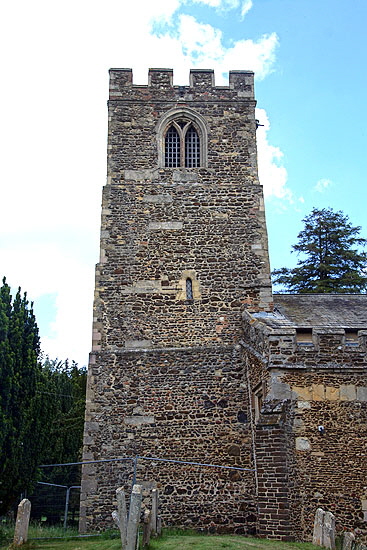 |
|||||||||||||||||||||
|
Left: The Shuttleworth family vault west of the church. Centre and Right: The tower from the south. |
|||||||||||||||||||||||
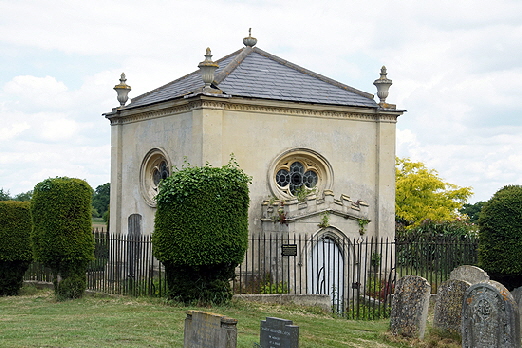 |
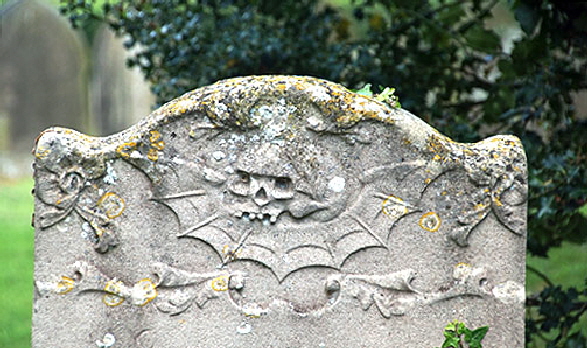 |
||||||||||||||||||||||
|
Left: The Ongley mausoleum at the north east corner of the churchyard, It is, it must be said, a little unkempt. It contains a remarkable forty-two vaults of which only ten are filled, the Ongley line having died out in 1877 with the death of the third Baron. Right: I can always rely upon my friend Bonnie Killingback to find gravestones with skulls for which she has an inexplicable yen. Even I liked this one with its fiendish grin and a mysterious bat-like or dragon-like wing below. |
|||||||||||||||||||||||
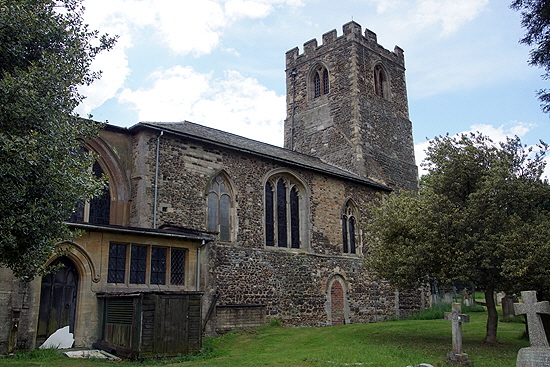 |
|||||||||||||||||||||||
|
And finally: the truly awful north side. My apologies to all those who cherish this church! |
|||||||||||||||||||||||
